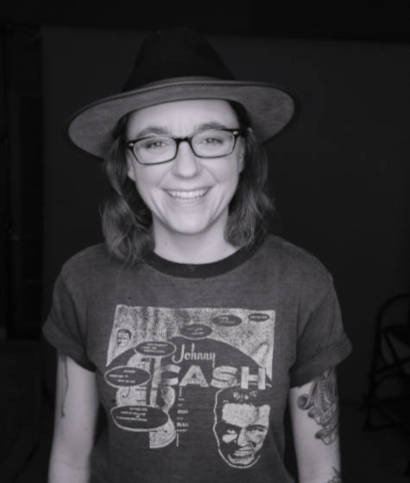
How to Write a Book Proposal That Sells: A Guide for Nonfiction Writers
¡ATTN nonfiction writers!
Did you know you don’t need to write a book to sell one? In fact, when it comes to nonfiction books, you shouldn’t.
Weird, I know—but only truth is spoken on these here writegeist pages, folks!
For non-fiction books, the very first step to becoming a published author is *not* to write an entire book—it’s to create a kickass book proposal.
What Is a Book Proposal?
A book proposal is like a business plan for your book and it’s required to be published with a traditional book publisher.
This can be a mystifying process if the publishing world is completely foreign to you, which is why many people choose to self-publish. And hey, there’s nothing wrong with that!
But if you’re like me and you want to see your books in bookstore windows from here to Siberia, you’re gonna need to put in the work to show the big-wig publishers why your book idea is worth investing in and why you’re the best person on God’s green earth to write it.
So, if you out here tryna write the next Eat, Pray, Love, listen up as we dive into some of the book proposal nitty gritties.
Why You Need a Book Proposal to Get Published
A book proposal is a professional document that outlines the concept of your nonfiction book idea in detail and explains to publishers why they absolutely must adopt it into their book family (and send you a hefty cash-money book advance in the process so you can write your book without worrying about where rent’s coming from!).
If you think of a publishing house like a bank who gives out loans (advances) to authors, the book proposal is the business plan you need to prove you are worthy of the investment risk and show promise of a great ROI.
Essentially, it’s a sales pitch, which I know doesn’t sound fun to most creative people (trust me—I do know!). But you’re going to have to put on your big guy/gal panties and just do the damn thing because: not only is creating one required if you want to get published with the big dogs, but in doing so you will also find it’s actually hella beneficial to you.
Beyond just convincing literary agents and publishers that your shit’s nectar, not to be passed up, writing a book proposal will help you get clear on what you’re doing and build confidence that you can, in fact, do it! Creating a solid pathway to publishing can offer nothing but good things to you, even if you choose to self-publish in the end.
What are the elements of a book proposal?
You will get a wide range of answers to this question, depending on who you ask. That’s because the truth is that there is no one standard book proposal format, which means there’s a bit of room to play around creatively. However, there are certain elements that absolutely must be included in a book proposal to be taken seriously.
These are:
- Overview
- Author Bio
- Market Analysis
- Competitive Analysis
- Promotional Plan
- Book Table of Contents
- Chapter Summaries
- 1-3 Sample Chapters

Let’s look at these all in some more detail, shall we?
Overview
Clocking in at 3-10 pages in length, the overview is the most important section of your book proposal, and so you’ll need to get into the zone of genius and bust out your absolute best writing here.
Upon reading the overview, agents, editors, and publishers should have a clear understanding of what your book is about, who it’s being written for, why you’re the one to write it, and why they would be straight bonkers not to invest in your genius idea!
Author Bio
Who are you and why are you the best human on this entire planet to write this particular book? That’s what agents and publishers are looking for in this section. Written in third person, you can toot your own horn here, but remain humble at the same time. Most importantly, be authentic—let whoever you truly are shine through.
Market Analysis
Who will be willing to splurge $25 in a shit economy on your book? The market analysis explains who your target readers are and why your book will have commercial appeal. The more specific the audience the better. You want real facts and figures in this section.
The goal is to convince the publisher why your book will fit right into the current market and give your target audience what they’ve been waiting for.
Competitive Analysis
This competitive analysis helps the agent/publisher avoid needless initial research determining what’s already out there.
In this section you’ll do the work for them by highlighting at least five of the best-selling titles in your genre (the point is to choose books that have proven successful). Say what works with these other titles and why yours will too (as there should be some overlapping similarities).
But, most importantly, use this section to show how your book will be different from what’s out there—what will yours add to the equation that these pre-existing books haven’t managed to?
Promotional Plan
Your promotional plan is all about what you (not your soon-to-be publisher) are going to do to sell and promote the heck out of your book using your very own time, money, ideas, and connections. Publishers want—nay, need—to see that you will carry your weight in helping the book sell.
The promo plan should include:
- All the resources and connections you already have to help promote your book
- All the resources, connections, and ideas you will actively pursue to help promote your book
Book Table of Contents
This section is straight forward: You just need to list out your book outline in the format of a book table of contents, which will then correlate to the chapter summaries (see below). In addition to each chapter title and subtitle, include any other sections such as forward, introduction, epilogue, etc.
Chapter Summaries
The chapter summaries offer appetizer slices of each section for your book, and, when read together, should offer a glimpse at what the whole cake will taste like, so to speak.
Here, you will offer quick abstracts—no more than half a page each—of every proposed chapter in your book. You’ll want to include the working title and subtitle of each chapter (don’t worry, they won’t be set in stone yet) and focus on explaining what the main takeaway of each chapter will be for the reader and how each chapter works together to create a cohesive and appealing story arch.
Sample Chapters
Last but certainly not least, you will need to include 1-3 sample chapters. No rough drafts or half-baked thoughts allowed here—these chapters should be your absolute best writing, polished as perfectly as if they were going straight to print (though, truly your whole proposal should be sparkling!).
This most important section helps agents and publishers evaluate your writing style, tone, and prowess. Make sure to include any sidebars or extra end-of-chapter content such as journal prompts or reflection questions that you plan to use. You want to offer the full picture of what a full chapter will look like here. Give it your all!
How long should a book proposal be?
This varies depending on the book topic and genre, but you’re looking at a range of 20-50 pages (double spaced) not including the sample chapters. Once the sample chapters are included, book proposals can sometimes top out at 70+ pages! In other words, writing a book proposal is no small endeavor!
Again, there is no exact set standard, but if it’s less than 10 pages, you can be sure you’re being too vague.
What if I’ve already written my entire book, do I still need to create a book proposal?
Yep, yes you sure do. Sorry, mate—there are no shortcuts to author excellence. Indeed, nonfiction books sell because of the strength of the proposal itself. It’s a rite of passage that cannot be worked around (unless you’re, say, Beyoncé). You gots ta do the heavy lifting if you want to be amongst the literary champions. Or, you can join the ranks of very busy, very smart people and hire expert ghostwriters like us to do the dirty work for you!
What do I do after I complete my book proposal?
Once the book proposal is polished (please have someone you trust edit it, preferably a pro editor, but if your mom’s got a hawk-eye for grammar that’s better than nothing!), you are going to send that puppy out to your favorite literary agents.
How do you know who your favorite literary agents are? Because you put in quality time researching the ones who will be a good fit for your genre and topic. Pro tip: Find out who your favorite authors’ literary agents are—odds are they might be a good fit for you, too.
Welp, there you have it—the skinny on book proposals!
What other questions or insights do you have on how to write a bangin’ book proposal? We’d love to hear you sound off in the comments!
SHAMELESS PLUG
Is it time to tell (and sell) your story? Whether you want to write a book to fulfill your dream of becoming a published author, to expand your business, or to leave a legacy, writegeist’s pro (and published) editorial team can help you on the path toward fulfilling your dream as a traditionally published author via our consulting, editing, and ghostwriting services, as well as with our DIY Book Proposal Bootcamp course.

Arizona Bell is the author of Soul Magic: Ancient Wisdom for Modern Mystics (Macmillan) and a bestselling ghostwriter who helps ambitious entrepreneurs, zealous visionaries, and inspired world-changers amplify their voices. In addition to full-length book ghostwriting, she also crafts irresistible book proposals for aspiring authors and teaches courses on the art of the book proposal.
leave one here
comments